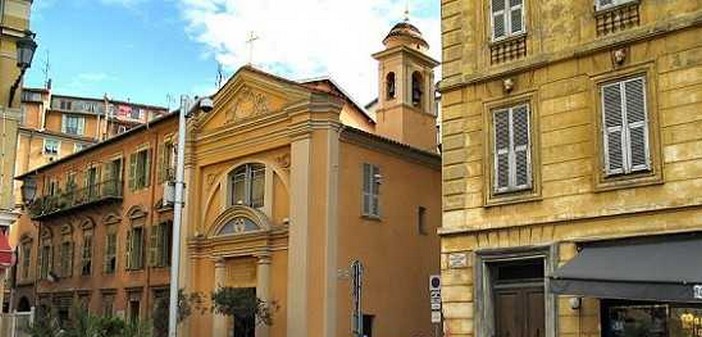This church in the old town of Nice has had several dedications, which have succeeded each other over the centuries. Its first dedication was to Saint Giaume (James) and then it became the Church of the Annunciation in 1834, and is popularly known as Saint Rita.
The people of Nice mostly know it by this name. Its erection dates back to the 10th century, dedicated to the Apostle Saint James the Greater, and it remained so for 935 years. Saint James or Giaume is the second most important of the four churches in Nice.
In 1604, the Carmelites settled there, and the church became that of the Confraternity of Mount Carmel. They remained until the revolutionary French troops’ occupation in 1793. They were expelled like all other religious orders, worship was forbidden, and the church was transformed into a salt storage depot. Like the other churches, Saint James resumed its religious function at the beginning of the 19th century. In 1834 a fire destroyed the painting of the Transfiguration, which was enthroned in the apse, explaining the initial dedication.
It was replaced by another painting, that of the Annunciation, a work by the Russian painter Chévelkine, donated by Tsar Alexander I to Count Michaud de Beauretour. The building was then dedicated to the Annunciation. Since 1884, the Oblates of the Virgin Mary have led the worship in this church. The chapel dedicated to Saint Rita is recent, dating from 1934. Previously, it was that of Our Lady of Sorrows.
The Saint Peter’s Chapel, with a representation of the miraculous catch, is that of the fishermen. The seafaring people have two chapels here. The second, that of Saint Erasmus, belongs to the sailors. The Mount Carmel Chapel dates back to 1515.
The Saint Julien Chapel was, until the 19th century, a place of pilgrimage for sick children, and healings were confirmed there. The Chapel of the Immaculate Heart of Mary was that of the confraternity for the conversion of sinners. It was also that of the porters, with a painting of Saint Anthony the Hermit.
The latter had the privilege of allowing their pigs to roam the streets of the city. This church is all gold, marbles, and stuccoes. During Christmas celebrations, it presents one of the most beautiful nativity scenes in Nice. It is the expression, like all the churches and chapels of the old town, of Baroque art.
This art that illuminates Faith and devotion, art inherited from the Council of Trent and the Catholic Reformation. God is light, greatness, and magnificence.
Thierry Jan


